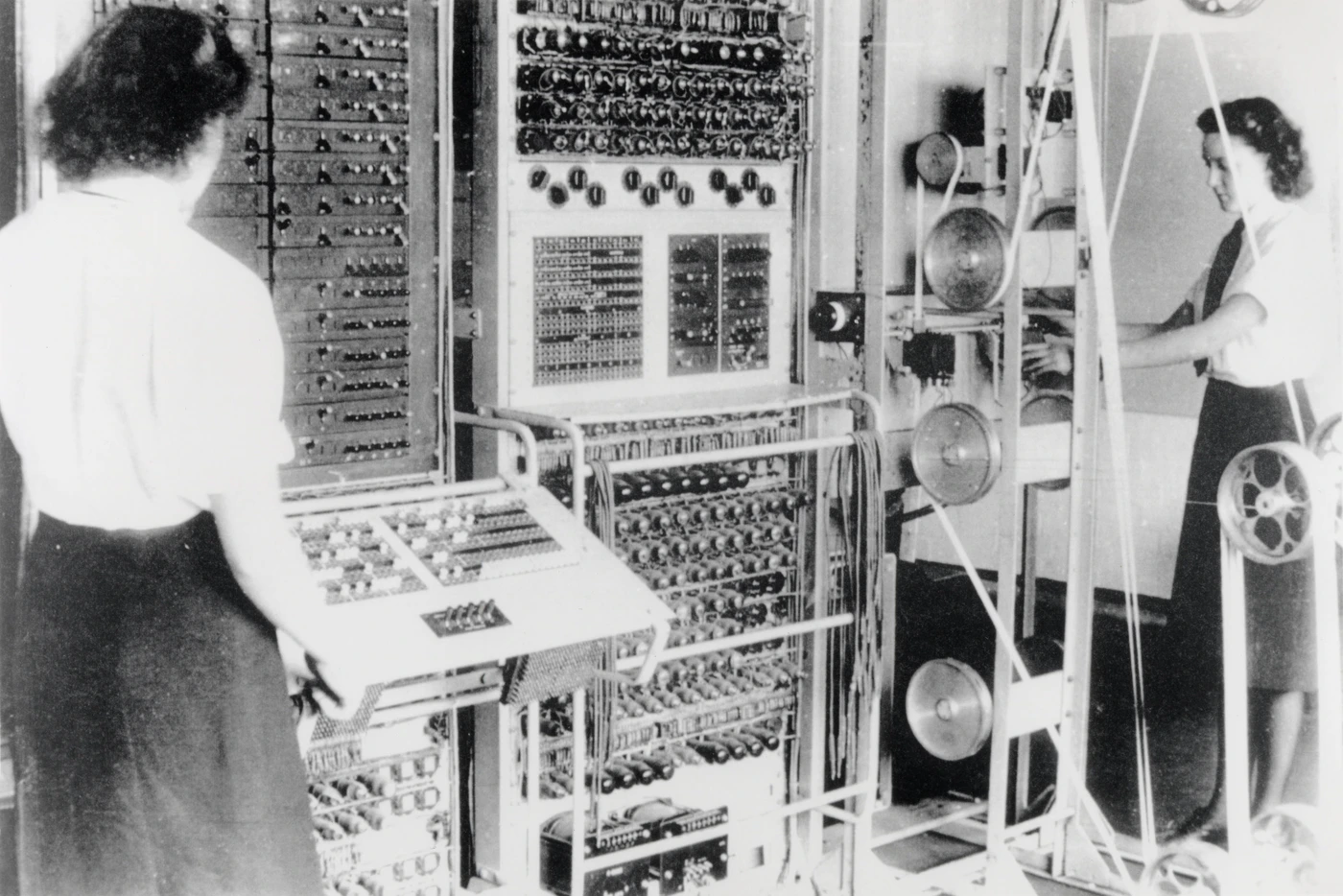The Paradox of Technology Progress
It’s an open question when computers were invented. The Jacquard loom (18th century), Babbage’s Difference Engine (19th century), Alan Turing’s paper “On Computable Numbers” (1936), Colossus (1943) and ENIAC (1945) all have credible claims. The Apple II (1977) and the IBM PC (1981) certainly don’t, but can’t be ignored for the immense role they played in popularising computing.

“I think there’s a world market for maybe five computers”, the president of IBM, Thomas Watson, famously said in 1943 – today we’re looking at closer to five computers per person.
If we could travel back 80 years and show the world of today to Turing and Watson, what would they think? Yes, almost every human is carrying a (really quite capable) internet-connected computer in their pocket, and are able to pull up an effectively infinite wealth of information and communicate with anyone anywhere – this is certainly impressive, and unlikely to be predictable from a 1940s vantage point.
Missing Progress
But they are also very likely to be stumped by the degree to which society is just fundamentally unchanged. Previous technological revolutions profoundly altered the fabric of society, to an extent that it can be difficult to even imagine life before, and rarely taking more than a few decades to do so. The mechanisation of agriculture changed society from one where almost everyone was employed in food production to one where less than 5% is.
My father grew up on a farm in a village. In his childhood home, the family was occupied tending to the land and the animals, and even employed farm hands. Today, all the land around the village, which previously required 5-7 farms with families and helpers to manage, is tended by one person and his machines. The rest of the farm houses are homes, workshops and light industry. None are occupied in food production.
The Revolution that Wasn’t
Where’s the equivalent for the computer revolution? Yes, we can work from home and it is significantly more feasible to operate a distributed business. With email and calendars on smartphones, many fewer secretaries are needed. But consult any statistical series documenting any significant parameter of society, and you’ll be hard pressed to point to where computers changed everything.
So what happened? Why has the revolution been so muted when the technology is so awesome?
There are two key factors that contribute to this: First, computers are the first technology that is truly general purpose; second, the opportunity-space is simply too vast – innovation is born of constraint, not possibility.
The Curse of General Purpose
Computers increase the productivity of a large number of tasks – but they also increase the productivity of drag and bureaucracy.
Take forms, the quintessential artefact of bureaucracy: Before computers, bureaucrats had to sit behind a desk and process physical forms. Forms would be pre-printed, and costly to update. They would be limited by the size of the sheet of paper and even the cost of mailing it around. The number of copies is restricted by how many layers a typewriter can punch through, and this again limits how many steps approval can require.
Rejection to change some detail entails restarting the whole process, with the full typing of the whole form.
Today, digital forms are effectively free to set up and email to thousands of people. They are endless in their demand for detail, and approvers can send them back for the tiniest of discrepancies. And submissions are often copied into dozens of mailboxes, all of which have a vague remit to direct attention to something or other, or kindly request some explanation or elaboration.
The Curse of Opportunity
Efficiency, and to a large extent progress, is the child of necessity, not boundless possibilities. Technology, and specifically computers, offer way too much opportunity.
The steam engine, driver of a much larger revolution than computers, makes a wheel turn with great force. That’s it. When building the technologies and businesses that would underpin the industrial revolution, inventors and entrepreneurs had one question, and one question only, to answer: What can I do with a turning wheel?
Their counterparts today are faced with machines that can do almost anything, and so end up spread too thin.
Less is More
Much can be learned from those 19th century innovators.
The organisations that deploy technology successfully typically do so with great focus; they effectively restrict the scope of opportunity and direct their attention to a narrow window at the pinnacle of the business’ core competency.
A successful software project begins and ends with a clear understanding of the problem that is being solved, and its relevance to the specific competitive advantages and market position faced by the business, and combines it with confident leadership to shield the project from undue temptations to expand the scope in irrelevant directions.
Enjoy Reading This Article?
Here are some more articles you might like to read next: